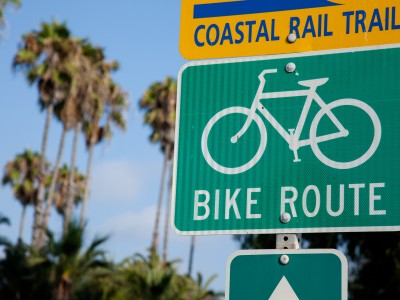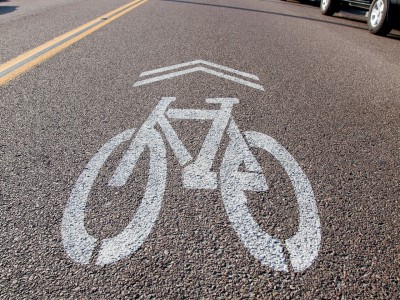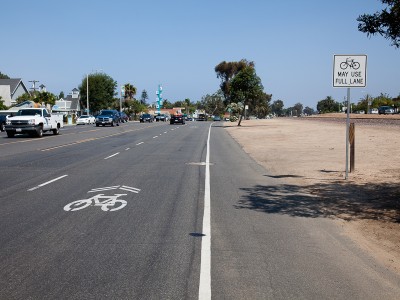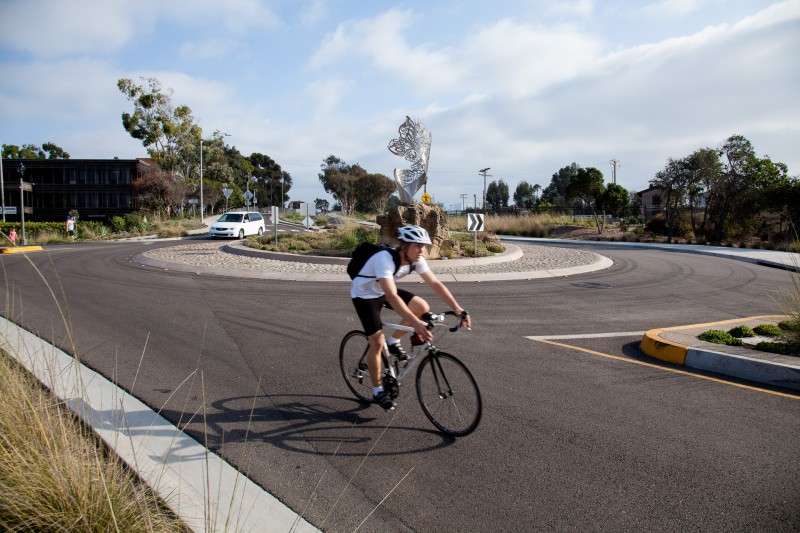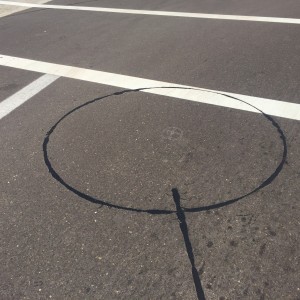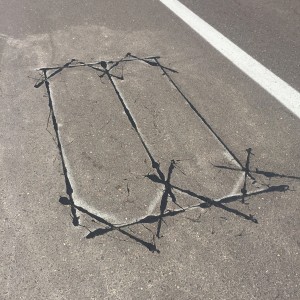A cyclist should approach roundabouts just as a motorist does. If you are riding in a bike lane and approaching a roundabout, look over your shoulder to determine if there are cars coming up behind you. Once you’ve confirmed that it is safe to merge into the travel lane, signal your merge and move into the center of the travel lane 50-100’ before the roundabout. At that point you will act just as a motorist. Yield to any traffic coming from the left when entering the roundabout and continue in the middle of the lane until it is time for you to exit at your desired street.
While you do have the same rights as motorists, exercise caution while riding in the roundabout. Motorists, especially those not familiar with roundabouts, can be distracted and focused on other traffic entering and exiting. Distracted motorists can often look right through a cyclist at traffic beyond them.
Roundabouts are located on Santa Fe Dr and Devonshire, Leucadia Blvd and both Hermes and Hymettus Ave. There is also a roundabout on the 101 on the north side of Carlsbad.



